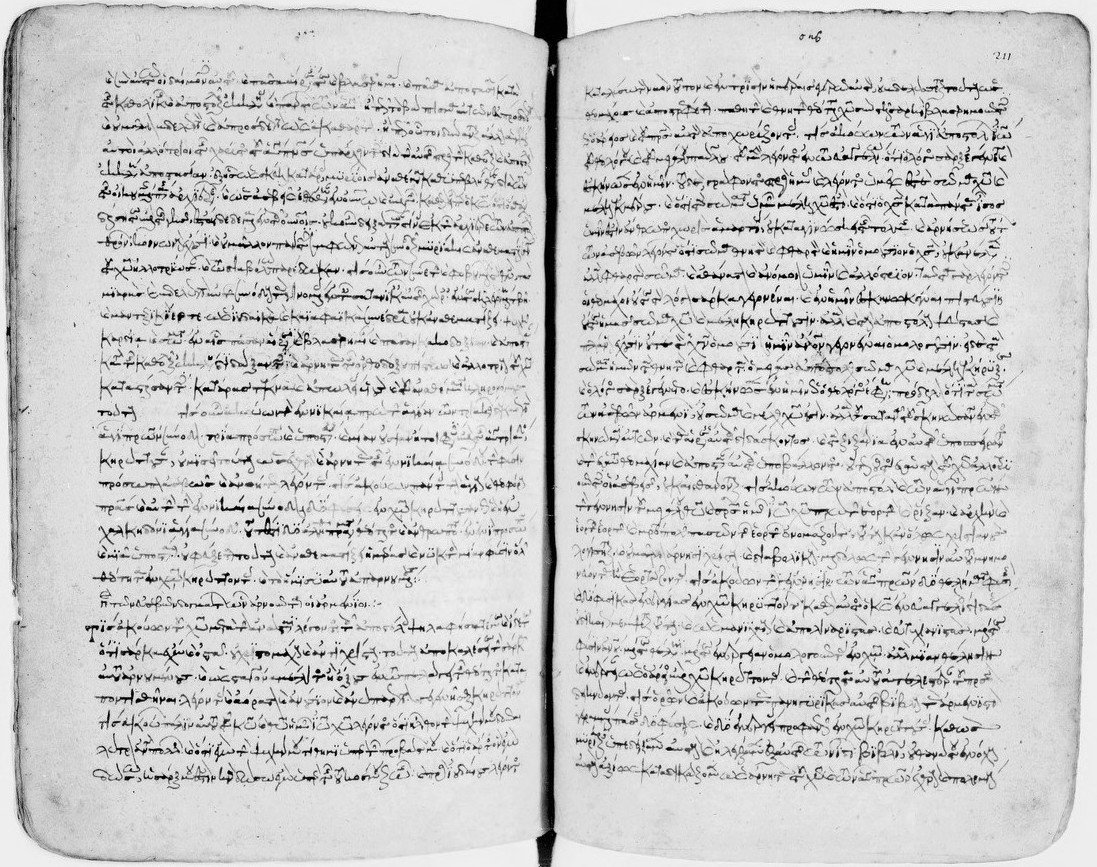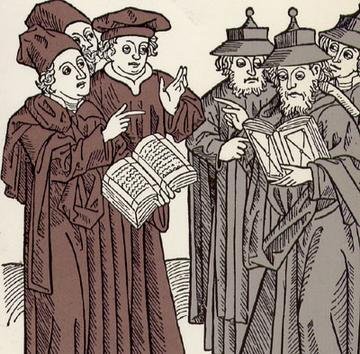My research crosses regions, languages, cultures, and religions and focuses on the entangled histories of Judaism and Christianity in religious, political, legal, and cultural contexts, with particular emphasis on identity construction, Otherness, marginality, and reception history of classical rhetorical devices in Christian and Jewish literatures. I also investigate how impersonation helps Jewish and Christian authors to construct narratives of legitimacy. I work with narratives, polemical dialogues and treatises, homilies, liturgical poetry, apocalypses, erōtapokriseis (that is Questions and Answers literature), hagiographies, legal texts, and dramas/liturgical plays. My research languages are Classical, Koinē, Ecclesiastical, and Medieval Greek, Biblical and Rabbinic Hebrew, Aramaic (Palestinian and Aramaic), Ecclesiastical Latin, Syriac, Coptic, and classical Armenian (Grabar).
Areas of Research
Christian Polemics
Jewish Polemics
Identity Construction and Otherness
Narratives of Legitimacy
Marginality and Stigmatization
Religious Boundary Crossing and Hybridity
Heresiology
Palestinian and Babylonian Rabbinic Literature and Culture
Byzantine Literature and Culture (Eastern Mediterranean)
Research Interests
Current Projects in Progress
Dialogica Polymorpha Antijudaica (Or Dialogus Papisci et Philonis). Critical Edition with a Facing English Translation, Commentary, and Notes.
This project is in collaboration with Andrew Jacobs and is a critical edition of an anonymous Greek dialogue text between Jews and a monk entitled Dialogus Papisci et Philonis and now renamed as Dialogica polymorpha antijudaica. This project entails the collation of the extant twenty-three manuscripts, the restoration of the text, an apparatus criticus, commentary, and notes with a facing English translation. This text which originates in Egypt and appears in two recensions, one from the eighth century CE and one from the eleventh century CE, offers important information on the transmission and reception history of anti-Jewish dialogues in Egypt and the broader Eastern Mediterranean at the end of the Early Middle Ages and the beginning of the High Middle Ages, as well as on the use of earlier anti-Jewish dialogues for the continuous production of new ones.
In Others’ Words: Impersonation and Legitimation in Jewish and Christian Texts from Late Antique and the Middle Byzantine Periods. (Monograph)
This monograph in progress draws on a wide range of late ancient and medieval Jewish and Christian literary sources to investigate impersonation in Jewish and Christian literary milieus, arguing that both Christian and Jewish authors had recourse to the same literary device to construct their narratives which served both similar and distinct purposes. This book engages with questions of decoloniality, and ethnic, racial, and religious subordination in Jewish and Christian literary communities.
“Rabbinic Foil Narratives to Other Stories: Toward a New Reading of Parodies.” (Article under review)
A number of rabbinic narratives show a resemblance with Other accounts of Christian provenance. Such rabbinic retellings have been interpreted merely as parodies and/or satires whose goal has been seen as mocking and ridiculing Christianity. This article proposes to abstain from polemomania, which prompts us to perceive certain rabbinic retellings of Christian stories as parodies. By offering a new close reading of three stories from b. Bekhorot 8b and b. Shabbat 104b (= b. Sanhedrin 67a) this article argues that we should read certain rabbinic retellings of Other stories not as parodies but as foil narratives that allowed rabbis to highlight through contrast between their own narratives and the source stories the interpretative difference between Others’ perception of certain narratives and rabbis’ own perception of those same narratives, revealing a more nuanced way with which rabbis perceived Other accounts in writing those stories’ succinct retellings.
“Foiling as a Way to Read Rabbinic Narratives of Encounters.” (Article under review)
This article considers foiling in rabbinic staged debates between two or more interlocutors as a way to read dialectical narratives. Drawing on three tannaitic stories, Mishnah Avodah Zarah (3:4 and 4:7) and Sifre Devarim ‘Ekev 43:12, in which the discussants converse on matters that pertain to idolatry, its pervasiveness, and rabbinic living within this religious and sociopolitical milieu, I make two interrelated claims: I argue that legitimacy was at the core of rabbinic argumentation and that rabbis deployed the Other as a foil as one way to claim legitimacy of opinions, positions, and attitudes, an approach that has not received much scrutiny. I also argue that depending on the context of the rabbinic dialogues, the foil can be anyone—a non-rabbinic, a non-Jewish Other, or even another rabbi—and that for the anonymous rabbinic authors, the foil is instrumental to discussing rabbinic views on topics otherwise deemed or considered controversial.
“Fabricating Internal Dissent in Medieval Anti-Jewish Dialogues: Jews and their Biblical Kin in Conflict.” (Article under Review).
The Jew in premodern Christian literature has diachronically been one of the most frequent characters for authors to use and mold to their liking. This is particularly the case with the anonymous Adversus Iudaeos dialogues that build on performative elements intertwined with theological discourse and in which meetings between Christians and Jews are dramatized for the sake of the author’s Christianity. Despite the Jew’s prominent role as a character in anti-Jewish dialogues, the reasons for its diachronic employment require further scrutiny. This article aims to address this need by examining the Jew’s role as a foil in staged discussions with Christians on topics of practice and belief. This essay scrutinizes three anonymous early medieval anti-Jewish dialogues from the broader Byzantine Mediterranean, The Dialogue of Timothy and Aquila, The Dialogue of Papiscus and Philo, Jews, with a Monk, and the Altercation of Simon and Theophilus and explores imagined discussions on three Christological issues: the virgin birth of Jesus , the Christological title Son of God, and the number of Gods involved in the creation. It argues that the authors of anti-Jewish dialogues deployed the Jew as a foil to both his Christian interlocutor and biblical Israelite authors building on his genealogical affinity with the latter to claim religious legitimacy of Christian teachings, rejecting at the same time contemporary Jewish claims of legitimacy of their own beliefs. Finally, it shows that by employing the Jew as a foil, Christian authors subverted, blended, and delineated Jewish-Christian boundaries in Middle Ages Byzantium and beyond.
Dissertation
My dissertation, titled Speaking as the Other: Late Ancient Jewish and Christian Multivocal Texts and the Creation of Religious Legitimacy, considers Adversus Iudaeos dialogues, written in Greek, Latin, and Syriac, and rabbinic multivocal narratives, composed in Mishnaic Hebrew and Babylonian Aramaic, and investigates how and why the anonymous authors of these texts deployed Other characters and Other narratives, constructing around them a plot of realistically portrayed encounters. Specifically, drawing on the literary concept of foil, which allows us to interpret by means of contrast the qualities of characters and stories, this study examines the deployment of contrasting characters and contrasting narratives in texts where interlocutors discuss topics of belief and practice with each other, and argues that the anonymous Christian and rabbinic authors deployed the Other (whether a character or a narrative) as a foil to another character or narrative, respectively, to claim legitimacy of opinion on matters of practice and belief. By weaving contrasting opinions between discussants and between narratives in the context of dialogues, these texts propose an authoritative stance towards the interlocutors’ opinions and attitudes, predisposing what the correct or legitimate view, attitude, or teaching is according to them. Comprehending the role of foil characters and foil narratives in the Adversus Iudaeos dialogues and rabbinic multivocal narratives allows us to understand how “others” were an integral component in the rhetoric used by the authors of these works. Speaking as the Other makes two major contributions to the study of Jewish-Christian relations and of rabbinic and Christian literatures: first, it examines rabbinic multivocal narratives and Adversus Iudaeos dialogues side by side to highlight similar objectives and diverse approaches for the making of imaginary dialogues and for the use of the Other by their authors; and, second, it is the first study of the impersonation of the Other in Christian and Jewish dialogical and dialectical texts from Late Antiquity and the Early Middle Ages. My work’s focus on the appropriation of the image of the Other sheds new light on the mechanics of stigmatization and boundary-making in late antiquity and the Early Middle Ages highlighting it as a complex process that used veiled ways to create bias.
Former Projects
Kitsos, Michail. Η Λειτουργική Χρήση της Menorah: Βιβλική – Μεταβιβλική Θεώρηση (Eng. Tr.: The Liturgical Use of the Menorah: Biblical and Post-Biblical Approach). Athens, GR: Typis Humanities Publishing House, 2010. (in Greek)
The Liturgical Use of the Menorah explores the history of the seven-branched candelabrum from its original conception and representation in the form of the tree of life in the ancient Near East and its transformation to a candelabrum in biblical Israel to its reception in rabbinic Judaism and its making to the Jewish object par-excellence. Through an examination of biblical, second-Temple period, and rabbinic sources, this book underlines the Jewish identity of the menorah as a traveling concept that surpassed even its importance as a ritual object.
Awarded the Michael Bernstein Dissertation Prize in Judaic Studies, 2021
Ancient Jew Review, “In Others’ Words: Dialogues and Legitimation in Ancient Jewish and Christian Multivocal Texts.”




